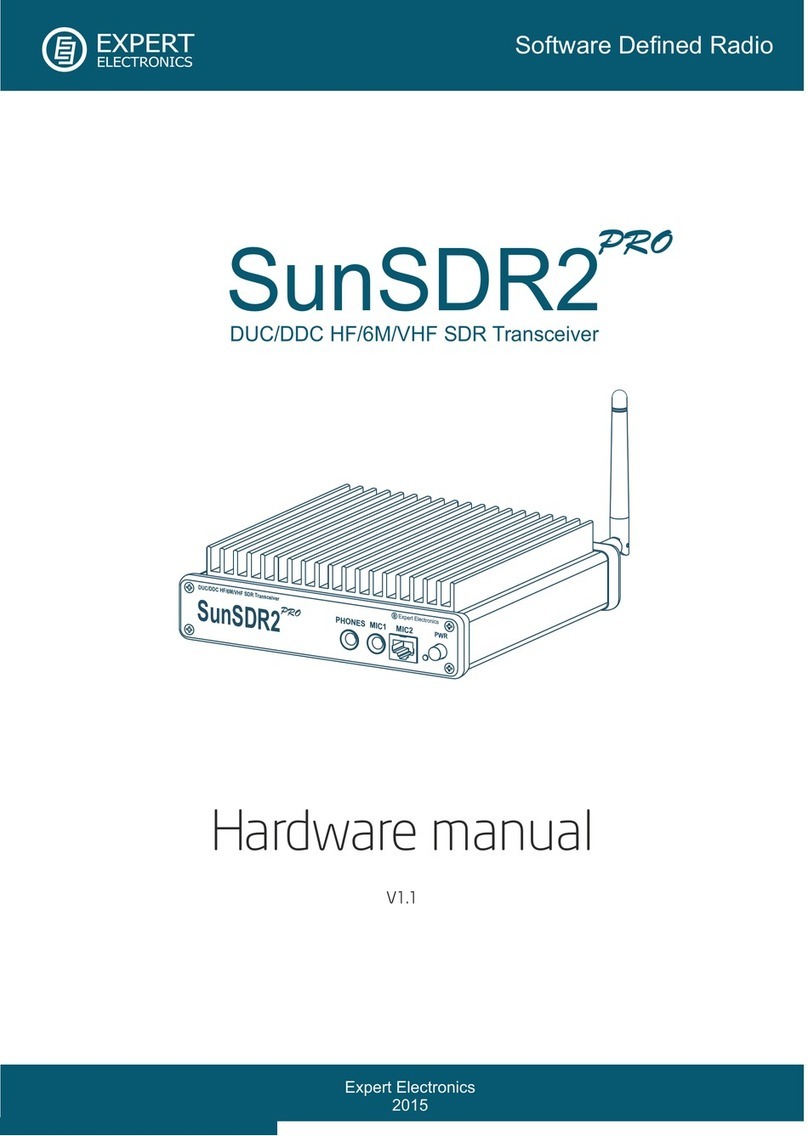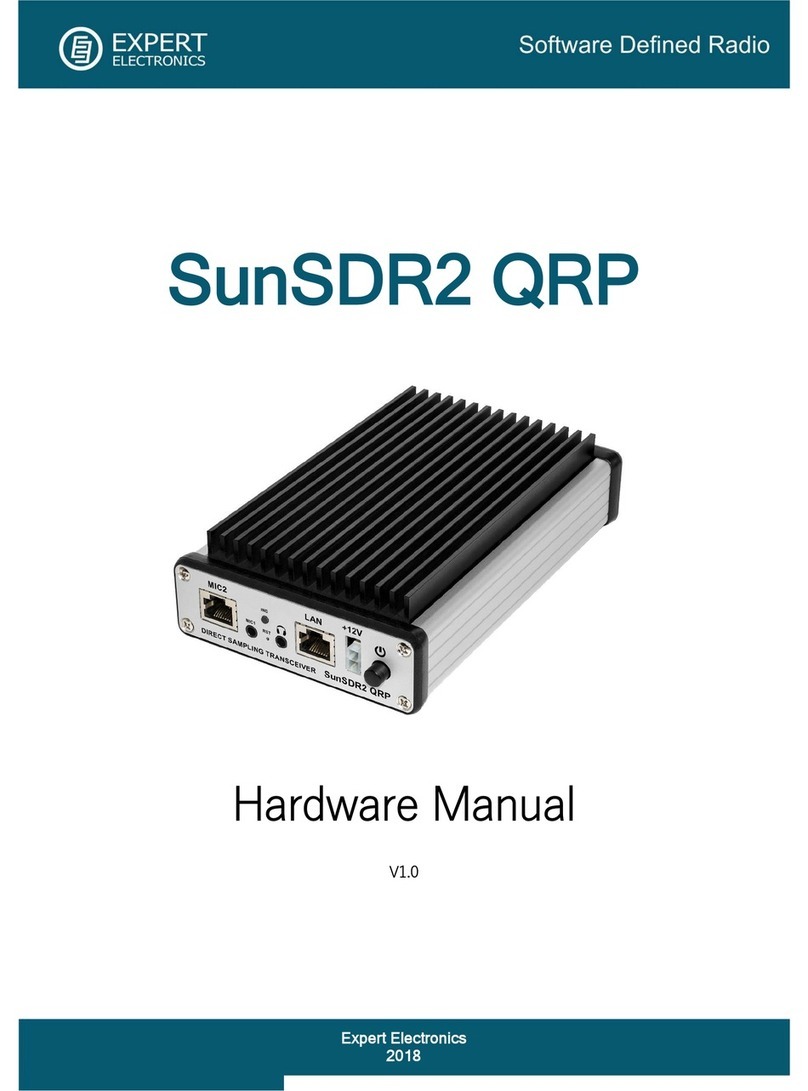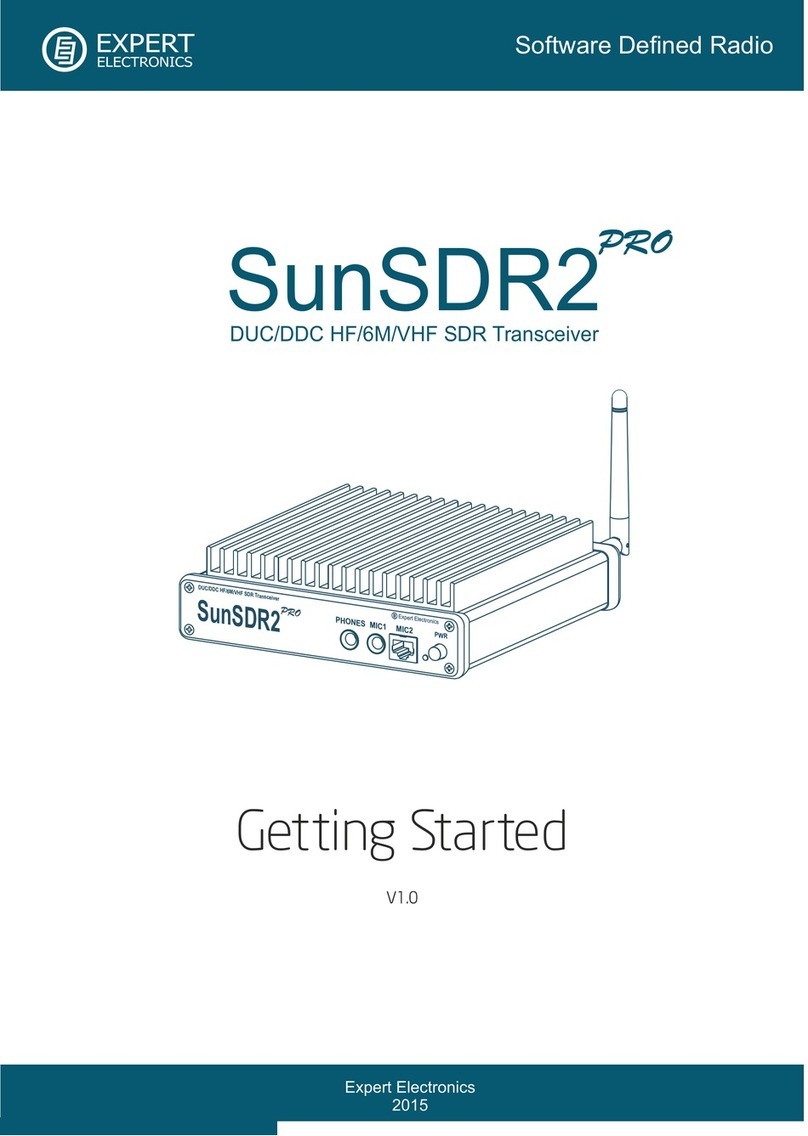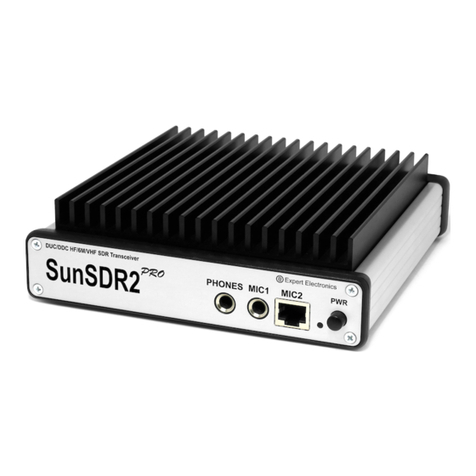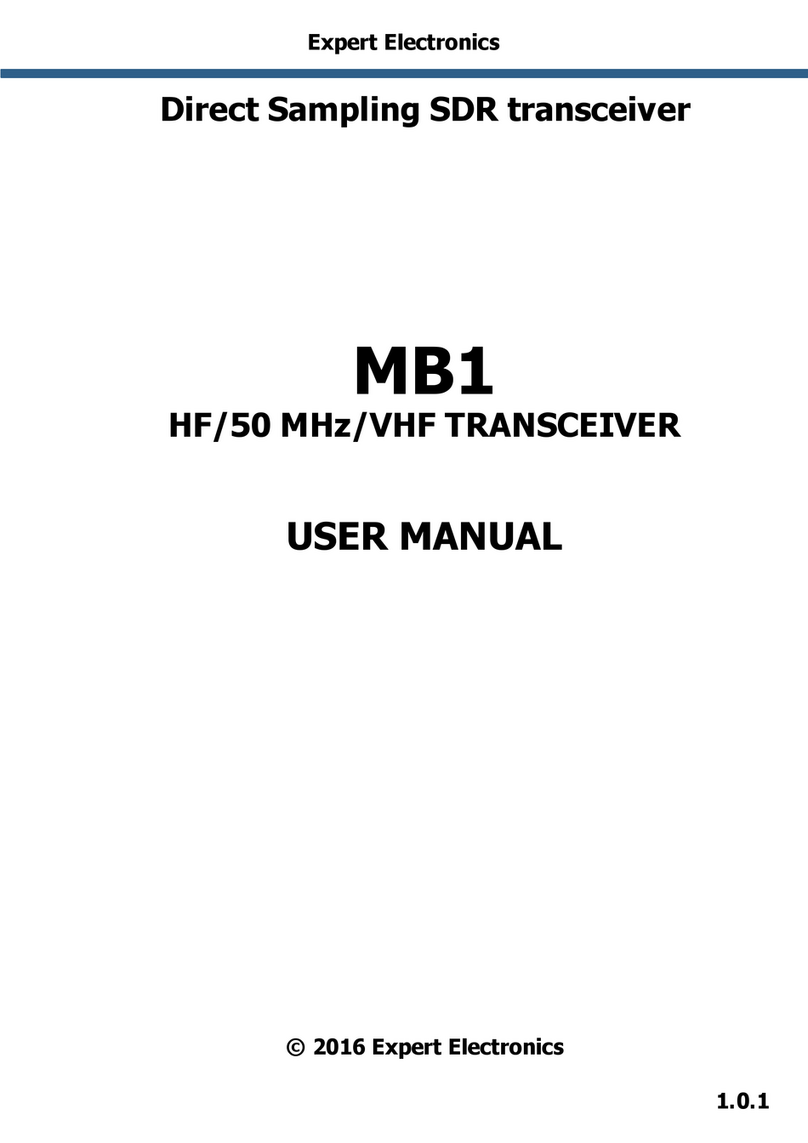
4
SunSDR2 DX User Manual © 2020 Expert Electronics
TABLE OF CONTENTS
5.7.1.4 CW .................................................................................................... 61
5.7.1.5 Ext Ctrl ............................................................................................... 62
5.7.1.6 Expert ................................................................................................ 64
5.7.2 Sound card ............................................................................................. 66
5.7.2.1 Sound card .......................................................................................... 66
5.7.2.2 Line out .............................................................................................. 67
5.7.3 VAC menu .............................................................................................. 69
5.7.4 Display ................................................................................................... 70
5.7.4.1 Main .................................................................................................. 70
5.7.4.2 Spectrum ............................................................................................ 72
5.7.4.3 Waterfall ............................................................................................. 75
5.7.4.4 Grid ................................................................................................... 76
5.7.4.5 Filter .................................................................................................. 76
5.7.4.6 Background ......................................................................................... 77
5.7.4.7 Indicators ........................................................................................... 78
5.7.5 CAT ....................................................................................................... 79
5.7.5.1 ECATv1 .............................................................................................. 79
5.7.5.2 OmniRig .............................................................................................. 81
5.7.6 Panel ..................................................................................................... 82
5.7.7 Features ................................................................................................. 87
5.7.8 ExpertSync ............................................................................................. 87
5.7.9 CW Skimmer .......................................................................................... 88
5.7.10 Shortcuts ................................................................................................ 90
5.7.11 IQ Recorder ............................................................................................ 91
5.7.12 TCI ........................................................................................................ 91
5.7.13 Spot settings ........................................................................................... 92
6. TECHNICAL CHARACTERISTICS 94
6.1 Receiver .................................................................................................... 94
6.2 Transmitter ............................................................................................... 95
6.3 Other ......................................................................................................... 96
7. TRANSCEIVER OPERATIONS 97
7.1 Local operation ......................................................................................... 97
7.2 Remote operation .................................................................................... 97
7.3 Frequency Tuning ..................................................................................... 97
7.4 Antenna switch ......................................................................................... 98
7.5 Voice Recorder Operation ........................................................................ 99
7.6 SPLIT operation ...................................................................................... 100
7.6.1 SPLIT + Sub RX Operation ..................................................................... 101
7.7 RIT/XIT .................................................................................................. 101
7.7.1 RIT ...................................................................................................... 101
7.7.2 XIT ...................................................................................................... 102
7.8 Digital modes operation ......................................................................... 103
7.9 Firmware-based protections .................................................................. 103
7.10 Settings folder ........................................................................................ 104

